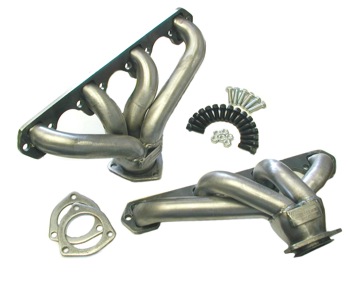- Location
- Harrisburg, NC
I actually have one of these coming to me today...just waiting on the FedEX man to make it appear at my door 

I wish I could afford to get one of these and get it ceramic coated inside and out.
Gotta say I do like it. Word of advice, spend a few bucks and get a good intake/exhaust manifold gasket from your favorite parts store. The one I picked up at work was somewhere in the neighborhood of $15-$20 and is a Felpro. The APN Manifolds come with one, but if I were to use the one they supplied me, I could see where there would be issues (has one section of it flaking off already, and it looks like it was partially bent in a couple places at one point in time).
in my pea brain,
manifold:

header:

I wish I could afford to get one of these and get it ceramic coated inside and out.
Similar principles apply to intake manifolds - with the exception that none of them are called "headers". However, an intake manifold can be tuned to assist with cylinder filling at a given RPM/RPM range (cf: "Helmholtz tuning,") but this is typically limited to higher RPM ranges, due to limited space underhood.
This whole thread is basically a semantics argument.
This whole thread is basically a semantics argument.
they are probably thinking of the cheap flex pipe that is used inplace of bent exhaust. you want a flex pipe. many vehicles come with these as stock and last much longer then 6 to 12 months. it is a small 4 to 8 inch length of special pipe with a stainless steel mesh on the out side. all 4 bangers that are front wheel drive have these. they allow for the exhaust to "pivot" in a location other then the manifold welds. the flex pipe looks like the junk OEM replacement manifold. the manifold only allows flex on only two pipes where the flex pipe on the exhaust after the manifold will allow the the whole system to move.
BTW - Am also replacing my Tranny mount because my engine shifts a little forward and back, but I think the mounts are still good (hope I didn't jinx it).
